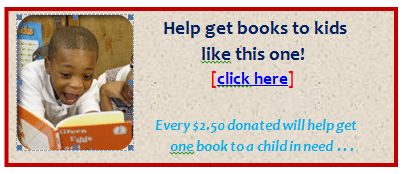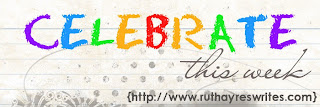Title: Dreaming in Indian: Contemporary Native American Voices
Editors: Lisa Charleyboy and
Mary Beth Leatherdale
Publisher: Annick Press
Pages: 128
Review copy: Digital ARC via Netgalley & final copy via local library
Availability: On shelves now
Summary: A powerful and visually stunning anthology from some of the most groundbreaking Native artists working in North America today.
Truly universal in its themes, "Dreaming In Indian" will shatter commonly held stereotypes and challenge readers to rethink their own place in the world. Divided into four sections, 'Roots, ' 'Battles, ' 'Medicines, ' and 'Dreamcatchers,' this book offers readers a unique insight into a community often misunderstood and misrepresented by the mainstream media.
Emerging and established Native artists, including acclaimed author Joseph Boyden, renowned visual artist Bunky Echo Hawk, and stand-up comedian Ryan McMahon, contribute thoughtful and heartfelt pieces on their experiences growing up Indigenous, expressing them through such mediums as art, food, the written word, sport, dance, and fashion. Renowned chef Aaron Bear Robe, for example, explains how he introduces restaurant customers to his culture by reinventing traditional dishes. And in a dramatic photo spread, model Ashley Callingbull and photographer Thosh Collins reappropriate the trend of wearing 'Native' clothing.
Whether addressing the effects of residential schools, calling out bullies through personal manifestos, or simply citing hopes for the future,
Dreaming In Indian refuses to shy away from difficult topics. Insightful, thought-provoking, and beautifully honest, this book will to appeal to young adult readers. An innovative and captivating design enhances each contribution and makes for a truly unique reading experience.
Review: Dreaming in Indian is a breathtaking collection of stories told through a wide range of methods. In their welcome, editors Lisa Charleyboy (Tsilhqot’in – Raven Clan) and Mary Beth Leatherdale explain, "We wanted to give people a fresh perspective on what it means to be Native in North America." They wanted to give Native Americans the opportunity, "... to tell their stories, their way." They definitely accomplished these goals. The many voices heard within the covers of
Dreaming in Indian allow readers to see the incredible diversity of the Native experience. The voices shout out that Native Americans are still here. They are here remembering the past, but also looking to the future speaking to us through fashion, art, words, and ways that fit them.
In the foreword, Lee Maracle (Salish and Cree Stó:lō Nation) shared this thought, "All the works in the following pages are part of that amazing struggle to go forward, into modernity, onto the global stage, without leaving our ancient selves behind." The first section of the book, 'Roots,' pointed to maintaining history, remembering the things that shaped them and their families. The section opens with two poems from Nicola Campbell (Nle7kepmx [Thompson], Nsilx [Okanagan], and Métis) speaking of childhood memories. These are followed by photos and essays from young people who are expressing what home means to them. Eleven different pieces speak to home and roots.
'Battles' is the second section of the book and included thirteen different pieces that addressed many topics such as stereotypes, gender, sexual abuse, government issues, fashion, comedy, superheroes and poverty. This is a section that gets at the heart of some issues Native youth are facing.
In 'Medicine,' the third section, readers hear about the many different ways that Indigenous people find strength and healing in their lives. This includes art, music, dance, culture, hunting, sports and many other activities. Chayla Delorme Maracle (Cree, Mohawk) wrote of her addictions and the choice to stay sober so she could share Sun Dance with her mother. "Nothing--no drug--can compare to the feeling I felt at that Sun Dance. That's what helped me quit everything."
The final section of the book, 'Dreamcatchers,' shows how Indigenous people in North America are dreaming and making those dreams come true. The book ends with healing and hope. With more than 60 contributors, this book is an amazing testament to what people can do when they collaborate and utilize their creativity.
The incredible beauty of this book is found in the turning of the page. The pages are 8.5 x 11" so the visuals are able to make quite an impact, especially when there is a two page spread. With each turn, the reader meets a new person or group of people - hearing other stories in a completely different way. There was a lot of attention paid to the presentation of each of these pieces. Even when the majority of the page is text, the design will lend fantastic visual support. One example is the essay 'Shedding My Own Skin' by Joseph Boyden (Anishinaabe). They used a white font and layered the text over a photo by Inti Amaterasu entitled Snake skin. Boyden shared his story of teenage struggles and his triumph over them. The text is excellent alone, but with the added richness of the photography, it becomes even more powerful.
Recommendation: I highly recommend this book to young adults or anyone working with young adults and college age students. It would be an excellent springboard for discussion about social issues, history, identity, and culture among other things. Art teachers may also want to add it to their design collection. It would also make for a wonderful coffee table book. Can you tell I love this book? This will be a book I visit and revisit many times.
Dreaming in Indian is a book to savor.
Extras: In case you are still not convinced to read
Dreaming in Indian, check out the trailer and the discussions with the editors:




































